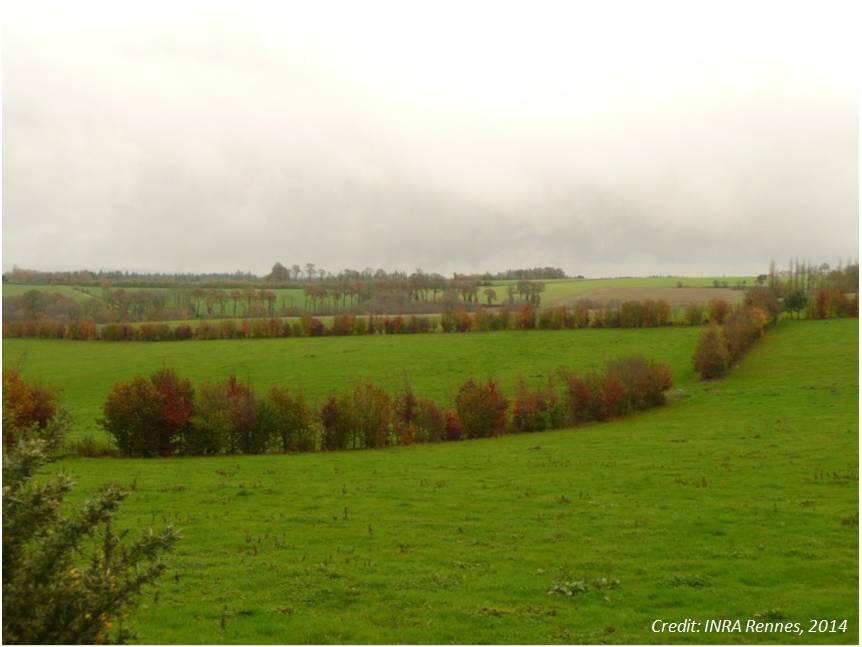
Agrofloresta em Bocage, Bretanha, França
Descrição do sistema
Reunião de stakeholders inicial
A reunião em 26 de Novembro de 2014 foi organizada em conjunto com a associação com "Terres & Bocages". Estiveram presentes 42 pessoas (mais os dois facilitadores e os três investigadores que trabalham para o projecto AGFORWARD ). Os benefícios-chave positivos das sebes foram vistos como sendo a biodiversidade e habitat da vida selvagem, a conservação do solo, o controle do escoamento e o sequestro de carbono. As questões negativas incluem os custos do trabalho e de gestão. As inovações potenciais incluem orientações sobre a escolha do número de linhas e densidade de árvores para obter funções de protecção e de produção de madeira na mesma sebe e o desenvolvimento de "modelos" para sebes com objectivos polivalentes.
Se você gostaria de saber mais sobre a actividade deste grupo, entre em contato com Dr Claudine Thenail (Claudine.thenail@rennes.inra.fr).
Faça download do relatório inicial de stakeholders
Faça download do protocolo inicial de pesquisa e desenvolvimento
Download the system description
A research update on the bocage agroforestry system in Brittany was produced in February 2016.
Lessons learnt
Claudine Thenail, Stéphanie Aviron, Valérie Viaud and colleagues at INRA Rennes in Brittany describe the lessons learnt regarding the French bocage system of hedgerows.
- Newly planted hedgerows (15 years after planting) harboured the same number of species (flora, butterflies, carabid beetles) as the traditional field margins.
- Although the results were not statistically significant, soil carbon levels in top soils were higher within 6 m of the hedgerow than at a distance of 18 m.
- At a field level, there is no simple relationship between wheat yield and whether the field was bordered by flat herbaceous field margins, old and/or new planted hedgerows.
- At least three of six farmers, asked about the time spent on hedgerow management, indicated that they or their staff spent 5-20 periods of 5 hours per year on the cumulated activities of tree pollarding, tree lateral pruning, and mechanical brush clearing.
- According to the interviewed farmers, the new hedgerows were providing protection for cattle, successfully constraining cattle movement, the regulation of runoff and soil erosion, improved landscape aesthetics, and successful designation of property limits. Firewood production and the protection of wild fauna were mentioned as supplementary benefits.